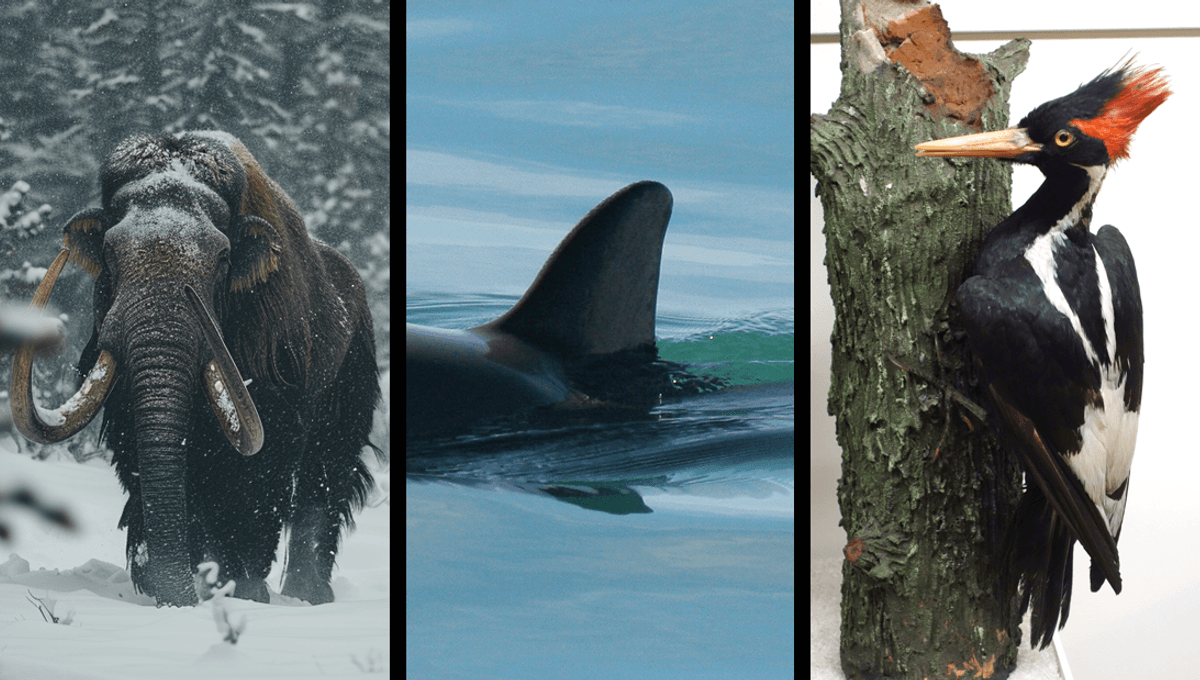
Colossal Biosciences has announced it will be launching a new non-profit: the Colossal Foundation. Already backed by a confirmed $50 million in funding, its goal is to halt the extinction crisis through three key conservation focus points.
The Colossal Foundation’s first key area of focus is “saving today’s at-risk species”, encompassing endangered species like the vaquita, northern white and Sumatran rhinos, ivory-billed woodpecker, and pink pigeon.
One of the ways it aims to do this is through biobanking, a type of repository that stores samples and has been used to conserve the genetic diversity of rare species through things like frozen zoos. It’s an approach that could help one of the world’s rarest mammals in many ways.
By biobanking the vaquita population today we are giving humanity the tools necessary to revive the species should they go extinct.
Ben Lamm
“With so few vaquita remaining and the current trajectory of the population, we are losing huge fractions of the population’s genetic diversity every year,” Colossal Biosciences co-founder Ben Lamm told IFLScience.
“In order to ensure that we can ever recover a population in free fall like this we need to take a snapshot of the vaquita’s genetic diversity as it stands today, so that if or when the population is in recovery there are genetic resources available that can help reintroduce the diversity that may have been lost between the time the population was biobanked and the time at which the population began to recover.”
“By biobanking the vaquita population today we are giving humanity the tools necessary to revive the species should they go extinct. If vaquita go extinct, and if the forces of extinction, such as illegal fishing, are addressed, then there would be the resources available to restore the species from extinction and one day reintroduce the restored population to the northern Cortez.”
This taps into another of its key goals: to “ensure tomorrow’s biodiversity”. By developing these biobanks, it’s hoped that they can provide a safety net for species facing extinction. It will focus on species closest to extinction to ensure their genetic diversity is not lost and, should the worst happen, ensure that we have what we need to potentially bring them back.
It got us wondering, what would you need for a recently extinct creature like the ivory-billed woodpecker to make it possible to one day bring it back?
“If we were to ever get to the point of de-extincting the ivory-billed woodpecker we would need to sequence samples from as many ivory-billed woodpecker specimens as possible to create a high quality genome, sequence their closest relatives (imperial woodpeckers, pileated woodpeckers and their relatives), and begin to work with woodpeckers eggs, such as pileated, in order to begin to derive primordial germ cells for editing,” said leader in exotic animal care and Colossal team member Matt James to IFLScience.
“With those genomic and reproductive tools we could then create breeding colonies that would allow us to restore the ivory-billed woodpecker. However, we would also need to find conservation partners that would be able to help restore the old growth, hardwood forest habitat in the southeastern US that the ivory-billed relied on.”
The Colossal Foundation is also committed to funding and deploying technologies utilizing artificial intelligence, machine learning, and computational biology to enhance our understanding of animal behaviors and ecosystems, as well as paving the way for innovative, data-driven approaches to preventing extinction with conservation partners.
Projects in its arsenal currently include a drone-based anomaly detection system used by Save the Elephants, a vaquita acoustic monitoring program, and an AI-enabled orphaned elephant monitoring system with Elephant Havens in Botswana.
Every time we lose a species within an ecosystem that ecosystem loses stability.
Ben Lamm
Through these three key aims and novel technologies and approaches, the Colossal Foundation hopes to be a powerful and committed ally to conservation, striving to protect the species we have on Earth today so that they remain so for decades to come.
“Species conservation and restoration are integral efforts to creating a more biodiverse, stable nature,” added Lamm. “Every species plays a critical role within its respective ecosystem that helps stabilize biodiversity loss and support ecosystem functions that have global impacts.
“The ivory-billed woodpecker was an ecosystem engineer that opened up ecological niches for other species by creating cavities in trees for other birds to nest and wildlife to hunt. The vaquita are critical predators that help maintain stable population levels of crustaceans while playing a key role as prey within the food web for species such as killer whales.”
“Every time we lose a species within an ecosystem that ecosystem loses stability. Much like a Jenga puzzle, the loss of that species creates an unstable base that is unable to support the structure. De-extinction, species restoration, and species conservation offer solutions to improving the stability of the ecosystem to perform its key function in the global system.”
Source Link: Colossal Biosciences Launches $50 Million Foundation To Halt Extinction Crisis